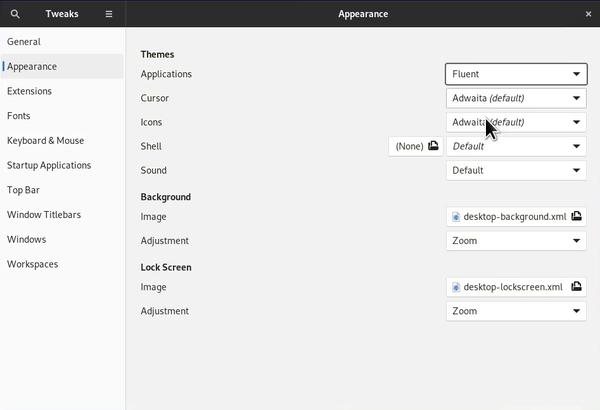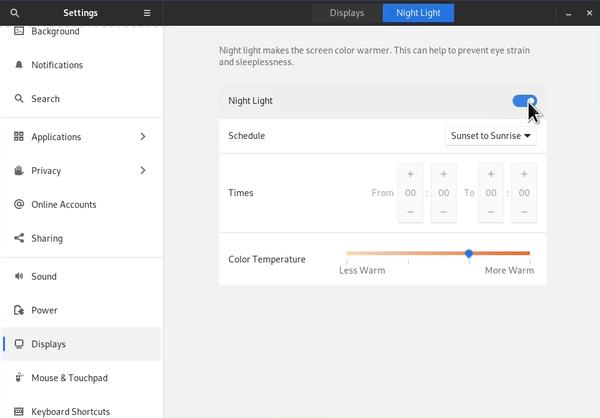20 Essentials Things to Do After Installing Debian 11
After more than two years of development, Debian 11 has finally landed! A lot has changed since then so make sure to check out our Debian 11 review. We also have a complete Debian installation guide that covers its new installer. In today’s post, we will explore 20 essential things to do after installing Debian 11.
Content
- 1. Fix CD-ROM error
- 2. Add contrib and non-free repos
- 3. Install Drivers
- 4. Install microcode
- 5. Install build-essential
- 6. Install restricted-extras
- 7. Microsoft Fonts Compatibility
- 8. Configure Swappiness
- 9. Speed up the Boot Time
- 10. Install Firewall
- 11. Install BackUp Program
- 12. Enable GNOME Extensions
- 13. Enable Tray Icons
- 14. Install Additional Themes
- 15. Add User Image
- 16. Add the Minimize Button
- 17. Enable Night Light
- 18. Change LibreOffice Look
- 19. Enable Snap and FlatPak
- 20. Extend the Battery Life
- Conclusion
1. Fix CD-ROM error
You might not be able to update your system after installing Debian 11 from a CD-ISO. CD-ROM repositories included with the installation can’t be used for updates and it will give you the error:
The repository cdrom… does not have a release file
Luckily, it’s easy to disable them:
Open Software & Updates > Other Software tab > Disable CD-ROM repositories > Close > Reload

2. Add contrib and non-free repos
The contrib and non-free repos have many useful packages that can’t be found in Debian’s default repositories like:
- Proprietary Drivers
- Proprietary Codecs
- Proprietary Fonts
- And many more!
Open Software & Updates > Debian Software tab > Enable DFSG and non-DFSG compatible software > Close > Reload

3. Install Drivers
Nvidia
Open-source drivers have gotten better these days. Still, proprietary drivers usually perform better so you may wish to use them instead.
# Install tool for hardware detection
sudo apt install nvidia-detect
# Perform the scan
sudo nvidia-detect
# Install recommended driver. It is nvidia-driver for me. Yours could be different.
sudo apt install nvidia-driver

AMD
Similar to NVIDIA, AMD offers its drivers which are also very easy to install.
sudo apt install firmware-linux firmware-linux-nonfree libdrm-amdgpu1 xserver-xorg-video-amdgpu
If you play games, I would also recommend installing support for Vulkan.
sudo apt install mesa-vulkan-drivers libvulkan1 vulkan-tools vulkan-validationlayers

4. Install microcode
Microcode is CPU firmware that controls how the processor works. It’s recommended to have the latest microcode to improve your CPU workings.
Open Synaptic Package Manager > Search for microcode > Install either intel-microcode or amd-microcode depending on your CPU

5. Install build-essential
It’s a package that includes many dependencies commonly used by different apps so it’s always good to have it installed. We all need it sooner or later.
sudo apt install build-essential dkms linux-headers-$(uname -r)

6. Install restricted-extras
In Ubuntu, we can install all restricted packages with ubuntu-restricted-extras. Unfortunately, we don’t have such a package in Debian. Nevertheless, all restricted packages can be installed with the command below.
sudo apt install ttf-mscorefonts-installer rar unrar libavcodec-extra gstreamer1.0-libav gstreamer1.0-plugins-ugly gstreamer1.0-vaapi

7. Microsoft Fonts Compatibility
Although we have installed Microsoft fonts, new Microsoft Office uses Calibri and Cambria which are not available on Linux. With that being said, we have alternatives that are very close in terms of compatibility.
sudo apt install fonts-crosextra-carlito fonts-crosextra-caladea
To learn more about how to use these fonts in Linux, check out the Microsoft fonts compatibility on Linux post.

8. Configure Swappiness
Decreasing swappiness value is one of the best ways to improve the performance of your system. This forces your Linux system to use RAM, instead of the hard drive. For those of you unfamiliar with Linux swap, check out our post on Linux swap.
Check the current swappiness value by executing:
cat /proc/sys/vm/swappiness # 60 (default)
Open /etc/sysctl.conf file as an administrator:
sudo nano /etc/sysctl.conf
At the end of the file, add vm.swappiness=10 which will reduce swap usage.
Press CTRL + O to save changes and CTRL + X to exit the nano editor.
Now reboot your system for the change to take effect.

9. Speed up the Boot Time
Each time you start your system, the GRUB screen shows up with boot options. We can disable the GRUB screen and boot straight into Debian. This way we won’t have to press the Debian option manually or wait for 5 seconds timeout.
# Open the GRUB config file and set GRUB_TIMEOUT to 0
sudo nano /etc/default/grub
# Update GRUB
sudo update-grub
If you happen to need a GRUB screen, you can still access it by pressing SHIFT on boot.

10. Install Firewall
Although there are not many viruses for Linux, it’s advisable to have a firewall that protects against network intrusions.
sudo apt install ufw
sudo ufw enable
We also have a dedicated post on the firewall in Linux so make sure to check it out for more advanced usage.

11. Install BackUp Program
BackUp programs are often overlooked. That is also the case with Debian 11 which doesn’t have backups by default. I always back up my system and good backups have saved me a few times!
Timeshift is the gold standard for system backups in Linux. It’s also very easy to install and configure.
Open Software Center > Search for Timeshift > Click Install
Upon opening the Timeshift, you’ll probably notice the Wizard button in the top
right side of the app. As the name suggests, this is a user-friendly way of
configuring backup.
Run Wizard and follow these steps:
1. Snapshot Type
- Select RSYNC
2. Snapshot Location
- Select the disk where you would like your snapshots to be stored.
3. Snapshot Levels
- You can choose how many snapshots Timeshift will perform/store on a monthly, weekly, daily, hourly and boot basis
4. User home directories
- Allows you to decide which folders Timeshift will back up. You should prioritize your home directory, but depending on your space, it won’t hurt to include /root directory as well.
That’s it for Timeshift! In case you accidentally lose your data, open Timeshift, click Restore, select a snapshot that contains the files that you would like to recover and that’s it!

12. Enable GNOME Extensions
Debian uses the GNOME desktop environment as default. We can supercharge GNOME desktop by extending its functionality with GNOME Extensions. Go to GNOME Extensions website and install their browser extension first if you don’t have it already. Now you can install any GNOME Extension with a click of a button! Let’s see how that works in the next tip.

13. Enable Tray Icons
Many third-party apps like Zoom, Dropbox, Skype don’t show up in the tray on the GNOME desktop. We can fix this by installing TopIcons Plus extension. Click the toggle button and that’s it!
GNOME Extensions can be customized with the Extensions app.
Open Extensions > Click gear icon next to TopIcons Plus > Set try horizontal alignment to right
![]()
14. Install Additional Themes
To install themes on GNOME, we need to enable the User Themes extension which can be found in the Extensions app. Now, go to the GNOME Look and download any theme you like.
Check out our Top 5 GNOME Themes for some of the most beautiful themes on the market.
Once you’ve picked your theme:
- Go to the Files tab
- Download the latest release (archive)
- Extract archive
- Move theme folder to ~/.themes folder (press CTRL + H to see hidden files in your home folder, create folder if you don’t have it)
- Open Tweaks
- Go to appearance and select your theme!
Following the steps above, you can also install different icon packs, cursors, and much more to make GNOME look the way you want it!

15. Add User Image
Desktop can’t be complete without a personal profile image so make sure to set one!
Open Settings > Users > Add image for your user

16. Add the Minimize Button
GNOME desktop environment exposes only the close button on application windows. Many users, including me, prefer having the minimize window button as well.
Open Tweaks > Window Titlebars > Enable Minimize

17. Enable Night Light
Night light reduces the amount of blue light at night. This is better for your eyes and helps you to fall asleep easier.
Open Settings > Display > Night Light tab > Turn on Night Light

18. Change LibreOffice Look
LibreOffice is a well-known office suite alternative for Linux. It comes with balanced default settings and it is probably not essentian thing to do after installing Debian 11, but I’ll show you some tips to make it even better.
Appearance:
Open LibreOffice Writer → View → User Interface → Enable Single Toolbar & Tabbed interface
Icons:
Open LibreOffice Writer → Tools → Options → Icon style → Select Colibre.

19. Enable Snap and FlatPak
Snap and FlatPak packages are universal app packaging formats for Linux. That means they work on any Linux distribution.
Open Software Center > Search for gnome software > Select the first entry > Enable Snap and FlatPak in Add-ons section > Restart Software Center
Now you can choose how you would like to install apps. Not all apps support Snap/FlatPak, but the support is getting there.

20. Extend the Battery Life
If you have Debian installed on your laptop, you can squeeze more battery juice by installing tlp (power management tool).
sudo apt install tlp
Conclusion
I hope 20 things to do after installing Debian 11 were useful to you and greatly improved your Debian desktop experience. As always, the list can be expanded so I’m looking forward to your tips in the comments below!
 Never miss a post from us, subscribe to our newsletter
Never miss a post from us, subscribe to our newsletter
Comments
Phillip Hill
Handy tips thanks for taking time to knock it out for everyone
ntalam
the whole thing is shit if you dont have the wifi drivers
psycho
only ethernet works at first. wifi driver needs to be install through synaptic.
AlexOL
You can install with a downloaded iso including non-free firmwares. The installer detect and make available the wlo interface.
Max
It was great! Thank you!
Dan
in item 7 it is written “Although we have installed Microsoft fonts…” it is not clarified that the installation of Microsoft fonts is actually in item 6. for a new linux user this seems not clear.
steve
20 Essentials Things to Do After Installing Debian 11 w/Gnome desktop.
Colin Sare-Soar
I wish installing nvidia drivers was as simple as you make it out to be. It is very simple on Mint but straight Debian is a nightmare
X
I followed those exact steps to get it working with a GTX 1060
Colin Sare-Soar
I guess it is different for everyone and depends on other hardware. I had a vanilla install of Debian 11.1 and several of the commands listed just did not work. I found another method on a Debian blog which was quite complicated but easy enough to follow and everything worked well after that.
Jad
thank you. Will buy coffee soon!
Skerminkel
CD ROM? Cute. I cannot remember when I last used one. My laptop at my last company 4 years ago still had one, but I cannot recall ever using it.
Greggory Wiley
They still call it the cdrom even if you do it on a thumb drive. Technologic Digital Marketing